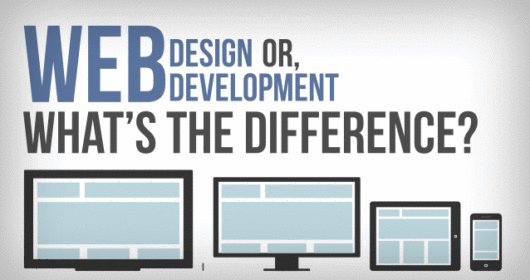How Long Will Windows 10 Last?

It has been almost a decade since Microsoft released Windows 10, and it has been voted the best operating system yet. But how long will this operating system last? Does it still have longevity in its future, or is it on its way to being phased out?
This blog post will answer these questions with an overview of what we know so far about the lifespan of Windows 10. Continue reading for more information on why you might want to consider upgrading your current operating system now, as well as what some experts are predicting for how long Windows 10 could last.
An Overview of Windows 10
Let’s begin with an overview of the humble beginnings of Windows 10.
Windows 10 is an operating system developed by Microsoft, which features a number of amazing functions and receives regular updates from its developer. It is a powerful operating system that is designed to work with touch screens and includes more advanced security features than previous Windows versions.
If you are looking for a more stable and fluid experience, Windows 10 may be a good choice. With this operating system, you’ll have the latest updates from Microsoft as soon as they come out, which means you’ll never be left behind with outdated software. It also offers seamless integration of PC and mobile devices, giving you access to your files anytime, anywhere.
But the question is: until when will Microsoft release updates for Windows 10? With hints about Windows 11 being rolled out, we know that Windows 10 will soon be phased out and no longer receive support from Microsoft. It’s sad, but it’s for the common good. The changing demands of people must be met, and in time, all the amazing features of Windows 10 will no longer serve their purpose and be deemed useless.
The Windows Lifecycle
You may not know this, but whenever Microsoft rolls out a new Windows version, they have already set a date to end support. You can find this data on the Windows lifecycle fact sheet page of Microsoft.
On this page, you can find a chart that shows the different Windows versions along with their release and end of service dates. You can even notice that for Windows 8 and older versions, there are two end-of-life dates: extended support and mainstream support. For the mainstream support, the Windows version receives security and feature updates, if any. This usually lasts up to five years after a version is launched. After this period, extended support comes into the picture. During this period, Microsoft continues to release security patches, but there will be no feature updates. This support period starts when mainstream support ends and lasts up to 10 years after the initial release of the operating system.
What Windows Versions Are No Longer Supported?
As of 2020, the only versions that are receiving support from Microsoft are Windows 8.1 and Windows 10. Last January 2020, Windows 7 officially ended extended support while XP and Vista expired a few years before. So, if you are still using the mentioned Windows OS versions, you may need to upgrade as soon as possible.
Windows 8.1 already ended mainstream support in January 2018 and its extended support is due in January 2023. Take note that the original Windows 8 version is no longer receiving support, so update to Windows 8.1 if you want to have a more secure operating system.
What Happens When Windows 10 Support Ends?
Once extended support ends for any version of Windows, that Windows version is automatically dead. Microsoft will no longer release updates, even if there are major security issues.
Now, your Windows version may work perfectly fine. But over time, it will become less secure. Attackers will soon discover vulnerabilities, and Microsoft will not do anything about them.
When Will the Windows 10 Support End?
With Windows 10, Microsoft is using a different support approach. Prior to this version, the end of life for a Windows version means that users need to upgrade or pay for a new Windows copy.
Now, because Microsoft offers Windows 10 as a service and not a product, they regularly update the operating system to make it the best version. Most of the time, these updates are free.
If you are using Windows 10, it’s good to know the end of support date for your version. That way, you will have an idea of when to update.
But then again, there are reports that say Microsoft will officially stop supporting Windows 10 on October 14 2025. The date marks the 10th year of Windows 10 in the market. When that time comes, there will be no new updates and security patches for all versions. Microsoft explained that its successor would be the most significant update!
How to Check Your Windows 10 Version
As mentioned, each Windows version has a corresponding end of life. To find out your version’s end of life, you have to identify your Windows version first. And to do that, press the Windows + R keys to open the Run dialog. Type winver into the text field and hit Enter. A dialog box will now pop up containing the version of Windows that you are running.
In general, you will see numbers that correspond to your version’s year and date of release. For instance, Windows 10 version 2004 shows as April 2020.
Next, on the lifecycle page of Microsoft, you can find a list of Windows 10 versions and their end of service dates. If you find that the end of support date is near for your version, it is high time that you update.
How to Upgrade Windows 10 Before the End of Support Date
Windows 10 is designed to update automatically. However, you can also perform manual updates if you want, especially if the end of support date is nearing.
Before the end of support for your Windows version, you will be greeted with a message that says your Windows version is nearing the end of support. And as the date gets closer, the warning will pop up more often.
In that case, get the latest update available. Go to Settings -> Update and Security -> Windows Update. And then, click the Check for Updates button to install the latest version.
What Happens After Windows 10?
Keeping track of the lifecycle of your Windows version can be daunting and frustrating. However, Microsoft made the process easier. Just check your version once in a while and make sure that updates are installed automatically. You won’t have to do anything else.
But if you consider installing the latest version, which is Windows 11, the better. You get to experience all the best that Microsoft has to offer for their operating systems.
Subscribe & Get E-Mail Updates Delivered
Our informative Design related articles featuring the latest Resources for Web Designers & the Web get delivered via email dialy. Thousands of readers have signed up already. Why don't you subscribe as well, and get articles delivered to your inbox?






Leave a Reply